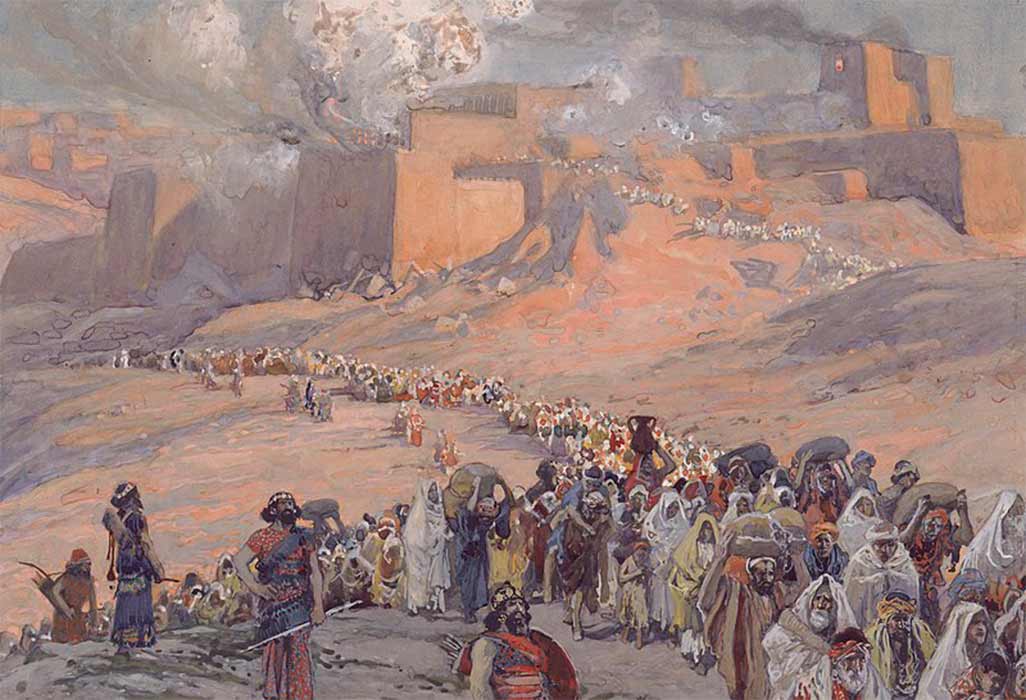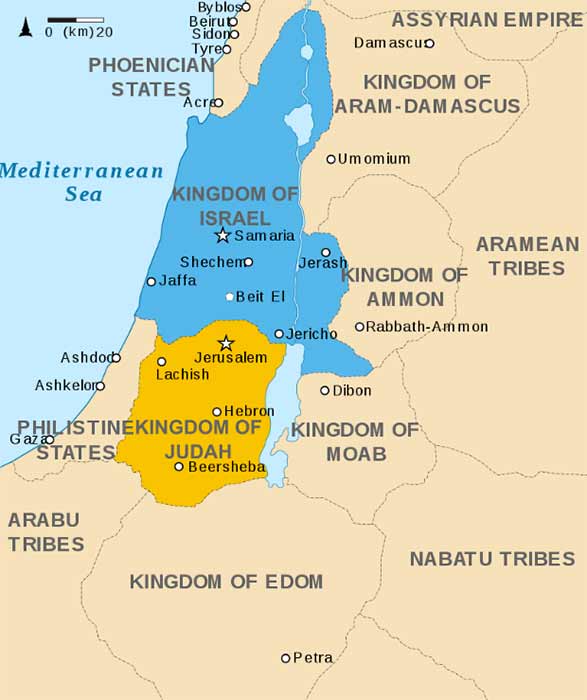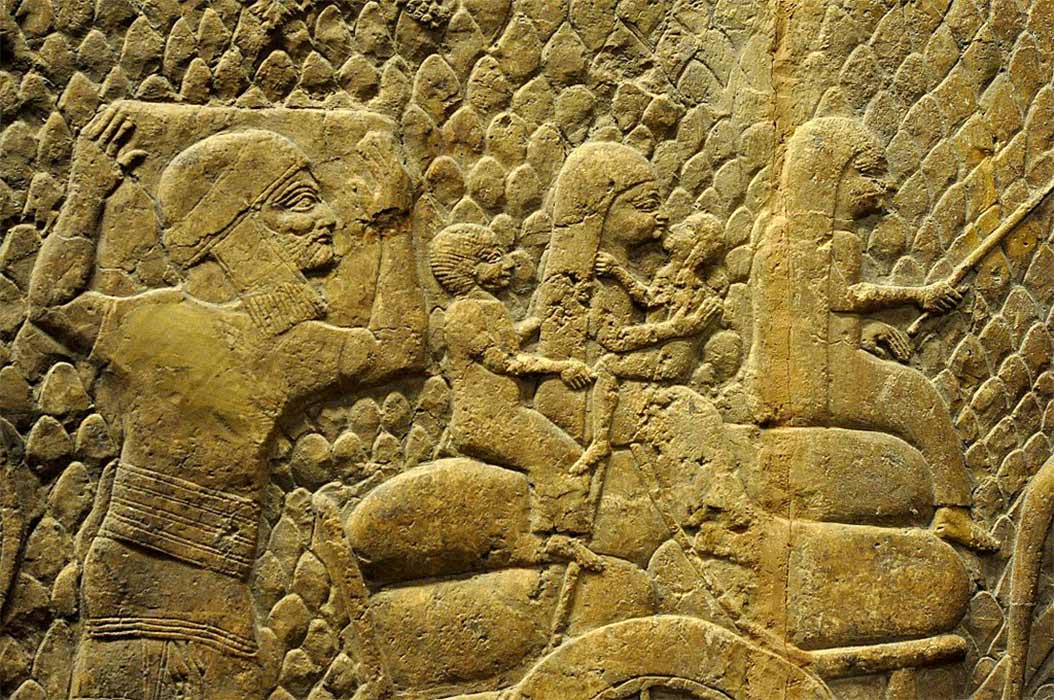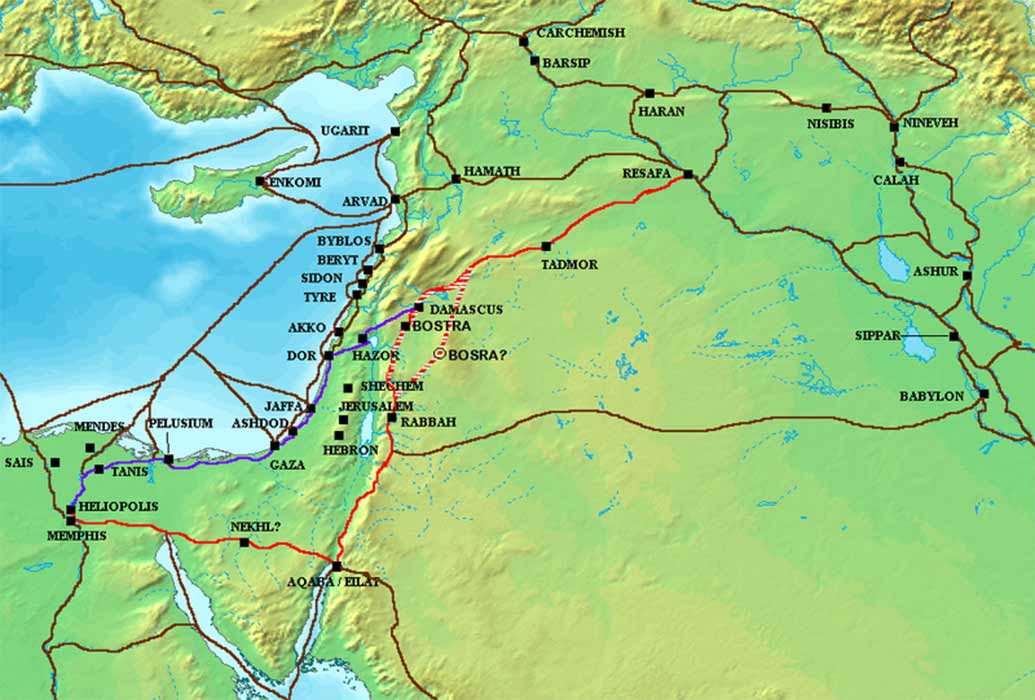
Mesopotamian Superpowers Laying Waste To The Ancient Near East
Call it Canaan, the Levant or the Ancient Near East; the region has always had a troubled history of warfare and invasions. For 400 years from 732 to 332 BC, this region incorporating Philistia, Judea and Israel has been the epicenter of the battlefields between the superpowers of Mesopotamia; the Assyrians (732 to 604 BC); the Babylonians (604 to 539 BC) and finally the Persians (539 to 332 BC). Its harbor cities on the eastern Mediterranean Sea elevated it as an important link in the sea-trade with Europe and Africa, and it also lay on the over-land spice-trade route towards Egypt.

Map of the region in the ninth century BC, the Kingdom of Israel is in blue, and the Southern Kingdom of Judah is in yellow, with Philistia to its left, on the Mediterranean coast. (CC BY-SA 3.0)
Due to its prime location, it became a coveted prize possession of whichever nation or dynasty that had envisioned expanding its empire during the first millennium BC. The Levant was a pawn at the mercy of the conquerors; its cities and villages ravaged and pillaged, raised to the ground, rising like a Phoenix from the ashes, only to be destroyed once more. To this one: The Levant was a pawn at the mercy of the conquerors; its cities and villages ravaged and pillaged, raized to the ground, rising like a Phoenix from the ashes, only to be destroyed once more.

Judean people being deported into exile after the fall of Lachish to the Assyrians (Palace at Nineveh, Mesopotamia, modern-day Iraq, currently housed in the British Museum, London. (Osama Shukir Muhammed Amin/ CC BY-SA 4.0)
The Assyrians 732 – 604 BC
The Assyrian conquest of the Levant encompassed three phases: In the period 734 to 722 BC, the region north of the trans-Jordan, part of Israel, the coast of southern Phoenicia and Philistia was destroyed; from 721 to 700 BC the rest of Philistia and Judea (excluding Jerusalem) fell and from 700 to 663 BC Assyrian fortresses were built along the Via Maris. The Assyrian domination ended with the death of Ashurbanipal in 627 BC.

Via Maris in purple and the King's Highway in red. (Briangotts/ CC BY-SA 3.0)
Assyrian administration of the conquered region consisted of provinces under the authority of a governor, autonomous vassal kingdoms, the Phoenician and Philistine cities along the coast and the nomads in the desert. They followed a policy of deportation to populate Assyrian cities and to weaken the defeated enemy. In turn they resettled Assyrians in the conquered regions, to provide political, military and cultural support to Assyria, but they respected the social and political systems of the conquered nations, who retained their nationalism in their material cultures. Although the Assyrians were not directly involved in trade, they benefitted from the economies of the coastal cities and the nomads and their influence can be detected in construction, pottery, weapons and products, such as olive oil. The Assyrian influence on the Levant was mainly the construction of cities, harbors and fortresses. They built Kur Essarhadon on the coast near Tyre and Sidon and Karum close to Egypt to benefit from the revenues of trade.




